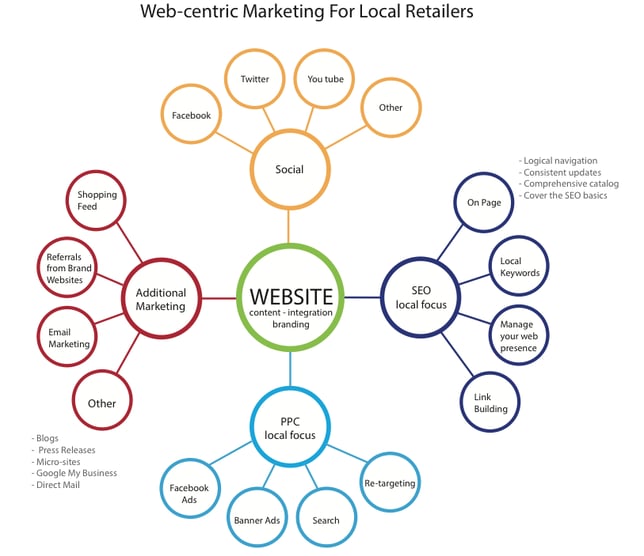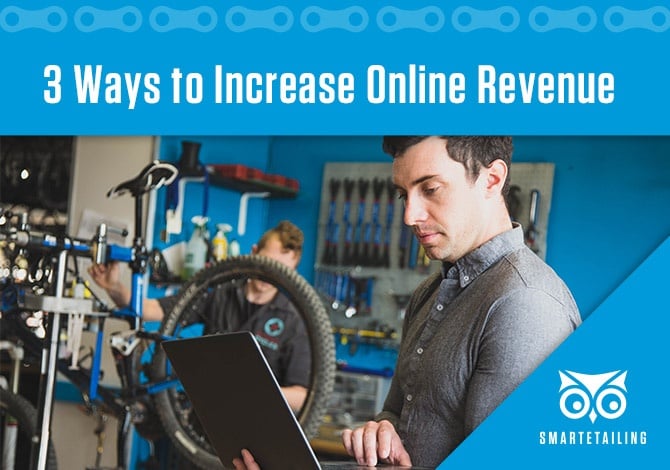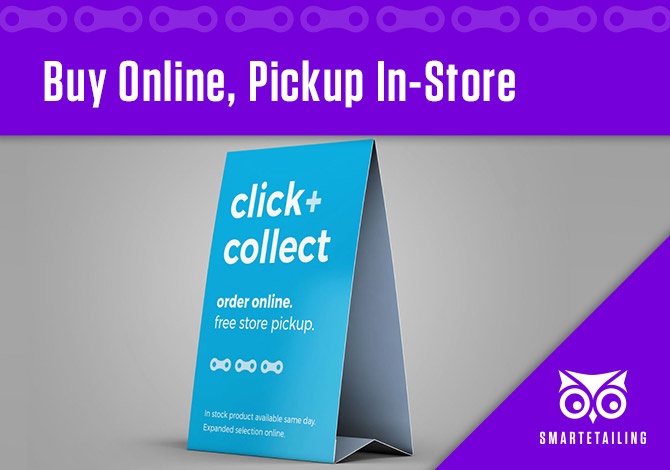What Supplier Direct-to-Consumer Sales Mean to IBDs
Trek announced recently that they were giving consumers the added option of buying bicycles on trekbikes.com. This move raises lots of questions for local retailers. Other bicycle brands are considering direct-to-consumer sales online and a number of them have already implemented these strategies. And, Amazon is now offering same-day delivery in select markets, and overtook Google last year as the primary starting point for online purchases according to Forrester Research.
It’s important to put these developments into perspective. Only 7% of retail sales in the U.S. occur online and in many instances these sales continue to be driven largely by low price. Most independently owned bike shops aren’t in a position to compete on price. The bottom line is the vast majority of sales will continue to happen in stores, however the research strongly points to the heavy influence of online activity in driving these purchasing decisions. Successful IBDs can leverage their stores’ unique brand identity and foster lifelong customer relationships by translating their in-store experience to their own websites.
I suspect part of the reason why Trek and other brands are offering online direct-to-consumer sales is because too few local retailers are providing the true omnichannel experience that consumers want. Consider the following:
- 73% of consumers attribute detailed product content as the single most important factor in the search and selection process.
- 71% of consumers expect to see in-store stock status online
- 80% of consumers research their purchases online
- Consumers want the option for in-store pickup online and the ability to purchase online.
Based on our experiences with over 1,500 IBDs, only about 15% of the estimated 3,950 bike shops offer the type of omnichannel shopping experience that consumers demand (source for 3,950 bike shops: The Bike Shop List). While consumer-direct sales on brand websites can work as a way to introduce new customers to retailers, it doesn’t replace the need for retailers to develop their own omnichannel strategy. In fact a component of Trek’s marketing program, that retailers have the option of participating in, involves email marketing, website updates, and an Ad-words campaign all of which will drive traffic to the retailers’ websites where customers will be looking for things like inventory status, pricing and other value-added services retailers offer.
As a retailer there’s power in owning the relationship with your customer particularly when you look at the potential lifetime value of that individual. For example, the lifetime revenue stream from a loyal pizza-eater can be $8,000, a Cadillac owner $332,000, and a corporate purchaser of commercial aircraft literally billions of dollars (source: putting the Service Value Chain To Work).
Customer information, historical sales and an established relationship are valuable marketing tools and contribute to the higher return on investment when marketing to existing customers versus capturing new ones. As local experts, retailers offer the convenience and the value of having products from multiple brands all in one place hand-picked for the type of riding in their area. Consumers don’t want to visit 10 different brand websites, create logins and go through the check-out process to get what they need. Perhaps most importantly many consumers still want to touch and even test ride products before they buy, often needing advice on sizing or compatibility.
By making products more accessible with the option to purchase online, it’s possible that brands might attract a group of consumers that have previously stayed away from traditional local bike shops. Bike shops can be somewhat intimidating environments – and don’t forget that only roughly 15% of these businesses are keeping pace with the shopping experience today’s consumers expect.
The silver lining to making products more accessible with additional online sales options is that the industry has an opportunity to create new enthusiasts by providing a better digital shopping experience and looking for more ways to cater to first-time cyclists. There are other ways to grow the size of the pie by opening up new places for people to ride. Great organizations like IMBA and People For Bikes are vigorously working on these opportunities.
Think about your store website as the hub of your marketing efforts, a concept called web-centric marketing. Once you’ve directed people to the store site, they can view product information with stock status, easily find the store hours and see what other value-added services you offer.
Two aspects of web-centric marketing tie particularly well to direct-to-consumer sales from brand websites. As part of the process of delivering a bicycle to a new customer, capturing their email is going to be an important component to full future marketing efforts. Once you have that email address you can follow-up with group ride information, service recommendations, invitations to in store events, anything that will help introduce that new customer to the sport of cycling and to your store brand. Of course these emails will link back to the store website.
And, part of Trek’s Retail Connect program will be showing inventory information for local stocking retailers on trekbikes.com. SmartEtailing calls this functionality Buy Local Now and some version of it is already being used on over 90 brand websites with more than 1,100 retailers reporting inventory data. Buy Local Now goes far beyond the traditional dealer locator by showing product what’s immediately available (in store or in warehouse) from nearby specialty stores.

Consumers want to touch and feel products and will get the best introduction to cycling when experienced local retailers help introduce them to the sport. At the same time these people want to interact with stores online from their phones, tablets and PCs. Technology and shopping behavior are evolving so rapidly that it’s hard to say how things will shake out but I’m relatively certain that, if anything, technology is getting more, not less, ingrained in our lives. In addition, it stands to reason that consumers want a similar experience online to what they’ve always had in stores. In the end, stores that have a great brand and manage to communicate it effectively online and in the store will be well positioned to capture sales and make lifelong customers out of consumers.
You May Also Like
These Related Stories

Workstand Appoints David Wert as President

3 Ways to Improve Your Online Business

.png?width=1676&height=300&name=WS_Logo_full_blue%20(1).png)
No Comments Yet
Let us know what you think